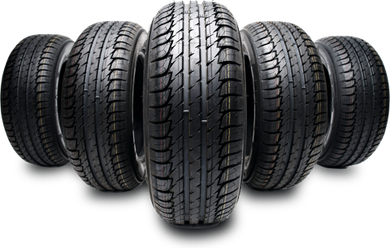Tire Solution: The Impact of Climate Condition
When it concerns guaranteeing ideal efficiency and safety when driving, understanding the effect of climate condition on tire service is critical. From scorching heat to icy roads, each climate element can dramatically affect tire functionality and general driving experience. By diving right into the effects of varying weather on tires, drivers can acquire useful understandings that may enhance their car's efficiency and long life. In this conversation, we will certainly explore the elaborate connection between climate problems and tire service, losing light on the relevance of weather-specific tire upkeep practices and factors to consider.
Warm and Tire Performance
When subjected to high temperatures, tires experience changes in performance that can significantly influence lorry safety and security and handling. The warm produced from prolonged driving or hot climate problems triggers the tire rubber to soften, resulting in decreased tread life and increased wear. As the rubber comes to be softer, the tire's hold on the road diminishes, influencing stopping distances and overall grip. In extreme cases, too much warm can even create tire blowouts, presenting a severe safety threat to the automobile and its occupants.
In addition, high temperatures can accelerate the procedure of tire aging, triggering the rubber to deteriorate more quickly. To reduce the results of heat on tire performance, drivers should on a regular basis inspect their tire stress, revolve tires to make sure also use, and check for any signs of damage.
Winter Results
Winter problems can have a considerable influence on tire efficiency and security. As temperature levels drop, tire rubber can harden, resulting in lowered grip on icy or snow-covered roads. In winter, tires may additionally shed atmospheric pressure much more swiftly, which can influence taking care of and fuel efficiency. Additionally, cool temperatures can create tire sidewalls to stiffen, raising the risk of damage from potholes or other road risks.
To reduce the effects of winter on tires, it is important to frequently examine tire stress and inflate them to the supplier's recommended levels. Making use of winter or all-season tires designed for winter conditions can also boost grip and grip on icy or snowy roads - discount tires morris il. Correct tire upkeep, including normal evaluations for wear and damage, ends up being much more essential throughout colder months to make sure optimal performance and safety
Rainy Issues Influence
Tires with worn-out treads are extra vulnerable to hydroplaning, where a layer of water develops up between the tire and the road surface area, leading to loss of grip. To battle this, drivers need to on a regular basis evaluate their tires for ample walk deepness and think about investing in tires particularly designed for damp problems.

Snow and Tire Safety And Security
When driving in snowy problems, having the right tires can make a considerable distinction in safety and efficiency. Wintertime tires useful link are created with unique rubber substances and step patterns to provide much better traction on snow and ice contrasted to all-season tires.
In addition to making use of winter season tires, it is essential to guarantee they are properly pumped up. Cold weather can create tire pressure to drop, affecting grip and handling (mopar tire service specials). On a regular basis checking and preserving the proper tire stress is vital for ideal performance in snowy problems

Weather-Related Tire Upkeep
When encountered with numerous climate condition, appropriate tire upkeep ends up being an important facet of vehicle safety and performance. Weather-related tire upkeep click now incorporates a range of practices targeted at guaranteeing ideal tire feature and long life in various climate circumstances. One key element of weather-related tire upkeep is tire stress guideline. Rising and fall temperatures can cause tire pressure to vary, influencing grip and gas efficiency. Routinely checking and adjusting tire stress according to manufacturer recommendations is important for risk-free driving in transforming climate condition. In addition, tire walk deepness plays a considerable function in handling various weather elements. Tires with appropriate step deepness give better grasp on damp or icy roadways, lowering the risk of skidding or hydroplaning. When tread wear gets to a particular deepness is vital for keeping grip and stability in negative weather, inspecting tire step frequently and replacing tires. By prioritizing weather-related tire upkeep, motorists can enhance safety, improve car efficiency, and extend the life expectancy of their tires.
Final Thought
In conclusion, climate condition have a significant effect on tire performance and security. From heat impacting tire pressure and use to winter minimizing grip, it is important to consider the weather when keeping and making use of tires. Rainy problems can decrease grip and bring about hydroplaning, while snow can increase the threat of accidents if tires are not effectively equipped. Weather-related tire maintenance is essential in making certain optimal efficiency and safety and security when traveling.
In this conversation, we will discover the detailed connection between weather problems and tire solution, losing light on the value of weather-specific tire upkeep methods and factors to consider.
